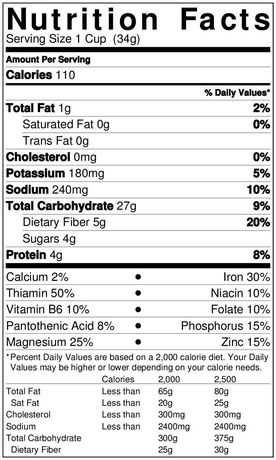The Law of Small Numbers
Do you think a diabetic (type 1 or type 2) can have normal, non diabetic blood sugars consistently without a rollercoaster of constant lows (hypos) or highs (hypers)? If you thought 'no way that's possible!', think again, because it absolutely is.
Dr. Bernstein who is an acclaimed physician and type one diabetic since 1946 (you read that right, T1 for 74 years and thriving!) talks about the Law of Small Numbers in his book which is considered a gospel on T1, The Diabetes Solution. The very straightforward Law of Small Numbers basically talks about-
Less carbohydrates - Less insulin - Less errors
Let me cut to the chase already and show you what this translates into, in a real life situation for a type 1 diabetic (me!). Now, I simply love a good breakfast, sometimes even for dinner! Here's a picture of my divine and very filling meal. What is on my plate are 3 organic, free range eggs fried in olive oil, stuffed with cheese and salami and seasoned with herbs and chili flakes and a freshly cut, salted cucumber on the side. Oh and the black coffee that I sipped on while taking this picture! Burp!

Setting the Law of Small Numbers into motion, I ate a hearty meal comprising of a small quantity of carbs (about 5 or 6 gms at most), for which I need very little insulin (for a meal like this I need anywhere between 0.4 to 0.7 units of short acting insulin) and it results in little to no error (read : no damaging blood sugar fluctuations, no life threatening lows or highs) and beautiful, stable blood sugars during and much after the meal too. Here is a snapshot of my sugars over almost a 24 hour period with less carbs, less insulin and a very tiny window for error (want to see your graphs and Time In Range on your phone too? Read this) -

Big inputs cause big mistakes and small inputs cause small mistakes
An illustration to prove this point would be a much loved, common and highly recommended (howw??) breakfast of the so called 'healthy' bran flakes. Each serving has about 80% carbs (first red flag, watch out!). Assuming that a diabetic had 3 precisely measured servings of bran flakes with skimmed milk, berries and a dash of honey, they would eat about 120 gms carbs for that particular meal. Commonly for an average adult, 1 gm of carbohydrate will raise them by about 5 mg/dl (and a higher spike for children).
What nobody tells us is, that even in packaged food, with a clearly written nutrient label, there is still a 20% margin of error. Which means that what we calculated to be a 120 gm carb breakfast could be anywhere from 96-144 gms of carbs instead. Now even if you perfectly read the labels and carb count, calculate your Insulin to Carb Ratio, your Insulin Sensitivity Factor, your hormonal changes, the effect of the Full Moon and the average orbital speed of Jupiter, so on and so forth and eventually (phew!) reach the answer of exactly how much insulin to take, you could STILL go horribly wrong. So an error of 5 mg/dl * 24 (which is a 20% margin of error of the 120 gm carb meal we carefully carb counted) could be a blood sugar variance of +/-120 mg/dl. That means if you targeted your post meal blood sugars to be 130 mg/dl, it could actually be anything from 10 mg/dl to 250 mg/dl, both of which are highly problematic blood sugars to have, of course. Quite simply, the higher the number of carbs, the higher the percentage of unpredictability.

Oh and it does not end there.
A high carb meal or snack very logically needs a higher dose of insulin. So let's say you need 15 units of short acting insulin to cover your bran flakes breakfast as per your ICR and other variables. The higher the dose of insulin, the larger the level of uncertainty in its absorption. There have been studies conducted at the University of Minnesota to prove that there is a 29% variability in insulin absorption when injected at the abdomen (the variability is higher on other body parts, by the way).
So let's do the math now - not only do you have to deal with roughly 20% (or more) margin of error with food labels (and we do not always eat out of packets, do we? So the margin of error just keeps growing! Imagine guesstimating carb counts for pav bhaji and chaat, good heavens!) PLUS at least 29% or more variability in the insulin absorption of industrial sized doses.
Do you feel like the ground beneath your feet moved just a little? Do you now realize just why we sometimes get a 'random', unexplained reading of 375 mg/dl despite correctly counting food, insulin, exercise and other factors? It's just too dangerously unpredictable, that's why! I would be too afraid to step out of my house confidently with the fear of going into a seizure from a hypo or landing up in DKA, even if there was a moderate chance.
On the contrary, if you eat a meal with 5 gms carbs (like I did), even if you do manage to calculate wrongly, the maximum variability in blood sugars would be 5 mg/dl * 5 gms carbs = +/-25mg/dl. So if my post meal target is 120 mg/dl, I could be anywhere between 95 to 145 mg/dl - now doesn't that make life SO much easier?

So remember kids,
Small quantities of carbs, small doses of insulin, small variation in blood sugars
BECAUSE DIABETICS DESERVE NORMAL BLOOD SUGARS TOO.
SUPPORT BLUE CIRCLE DIABETES FOUNDATION
We need your help and support to continue to grow, expand and touch the lives of countless people in the diabetic community. Every little bit helps us in sustaining this endeavour.
Click here to donate

